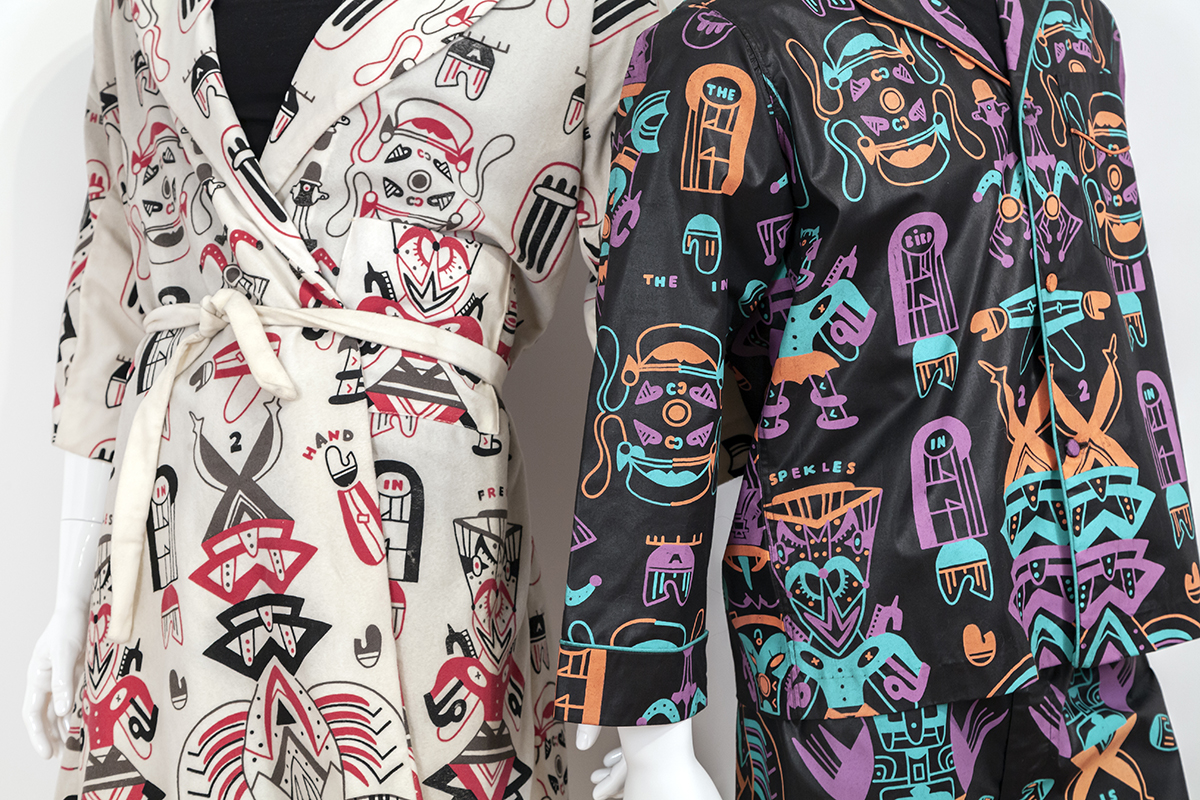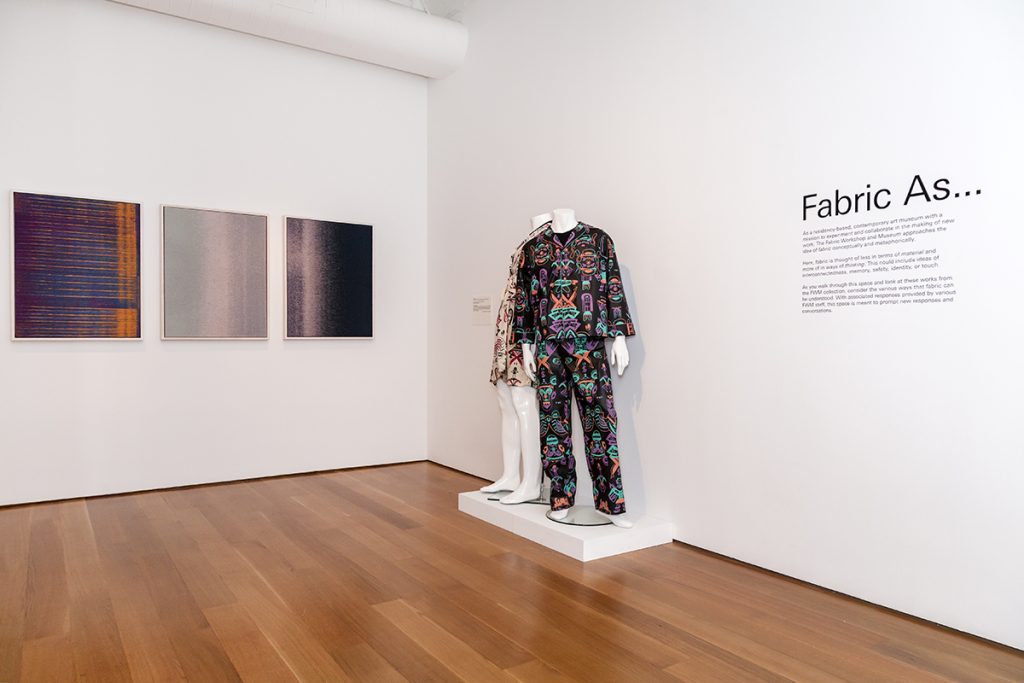Since the mid-1960s, Karl Wirsum’s stylized approach to figuration has held an influential role within American underground cultural aesthetics. As a member of The Hairy Who, a subversively irreverent group of Chicago-based artists who exhibited together from 1966-1969, Wirsum became known for his paintings and drawings that feature symmetrical forms comprised of flattened shapes, bold lines, and colors in unapologetic contrasts. Signaling the wide reach of Wirsum’s sensibility, his 1968 painting Screamin’ Jay Hawkins—now in the collection of the Art Institute of Chicago—was popularized as the cover of Hawkins’s album Because Is In Your Mind.
In the years leading up to his 1977-78 residency at FWM, Wirsum had already begun to expand his practice by embracing new materials and processes. His innovations included the achievement of new visual effects by painting on acetate, and he also experimented with turning his ideas into three-dimensional, life-sized marionettes. At the start of Wirsum’s residency, he arrived at FWM with a miniature blue airplane he had constructed out of a child’s shirt, complete with a white bow tie propeller, in tow. Though he made another airplane while at FWM—a giant, printed version—Wirsum’s best-known residency project is a screenprinted design titled A Bird in the Hand is Worth Two in the Bus.
With this design, Wirsum turned his iconic graphic style into an all-over repeat pattern. In tune with his interest in wordplay—another signature element within his practice—the title is Wirsum’s riff on a well-known proverb, evoking both absurdity and a quotidian urban commute. Screenprinted on black prechintzed cotton, the design features “satanic” figures in a Day-Glo palette and was used to make “nightmare” pajamas. The print, overlaid onto the shiny surface of the black fabric, combines image and text together in colors that have an effect akin to that of neon signs punctuating a row of storefront windows at night. Wirsum’s pattern was additionally produced in several different colorways and was used to make robes and other pajama designs.
Works resulting from Wirsum’s residency were included in the 1979 group show Material Pleasures: The Fabric Workshop at ICA, which featured projects by many of FWM’s earliest Artists-in-Residence. Wirsum also designed an umbrella that was included in the FWM traveling exhibition Rain of Talent: Umbrella Art, shown at several venues between 1989-1991. Following his collaborations with FWM, Wirsum continued to live and work in Chicago, exhibiting widely in the U.S. and abroad. In recent years, his work was featured in the exhibition Winsome Works(some), which traveled from the Chicago Cultural Center to multiple other U.S. venues between 2007-2008, and in 2019 both Corbett vs. Dempsey (Chicago, IL) and Derek Eller Gallery (New York, NY) held solo exhibitions of Wirsum’s work.

